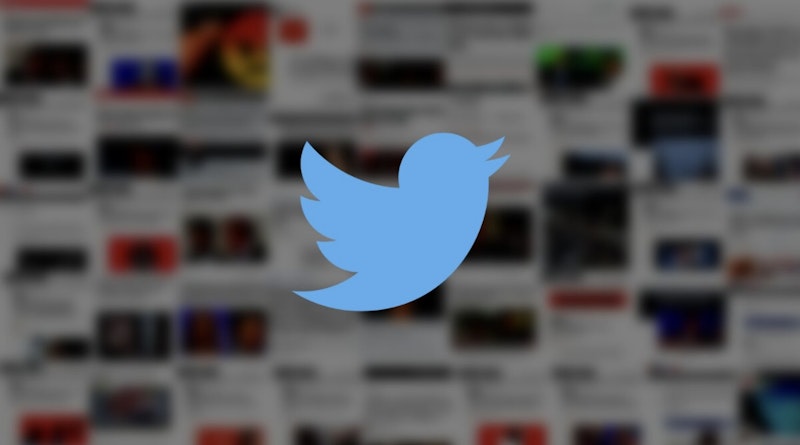Hundreds—perhaps thousands—of headlines and TV segments trumpeting yet another example of Russian interference in American politics were generated via the media's reliance on a shady database that claimed to have identified 644 Kremlin-leaning Twitter accounts dedicated to spreading disinformation. The media wasn’t privy to the methodology used to flush out these alleged subversives, nor did it care to know about it. The media's addicted to the easy story, so it no longer troubles itself with such details, unaware of the irony of its heavy coverage of the "fabulism" of George Santos.
On his latest trip to San Francisco, Matt Taibbi came upon the fraud perpetrated by Hamilton 68, the think tank dedicated to giving the updated version of the paranoiac "Reds under the bed" silliness of the 1947-1957 period. While combing through the documents at Twitter HQ that Elon Musk made available to him, the former Rolling Stone and Intercept reporter discovered an intense discussion among Twitter employees about the deluge of news stories based on the media's reckless reliance on the integrity of Hamilton 68, which is sponsored by the Alliance for Securing Democracy, an organization populated with CIA alumni and Never Trumpers like Bill Kristol. While top Twitter execs eventually figured out that Hamilton 68 was a fraud, they took little action due to concerns over pushing back too hard against the politically-connected Alliance for Securing Democracy. Twitter could've informed those on the list that they were being tarred as Russian dupes, but chose not to.
Taibbi found that the overwhelming majority of the 644 accounts were legitimate political commentators from the U.S., the U.K., and Canada who weren’t committed to a Russian-promoted agenda. During the Trump era, major media outlets like The New York Times, The Washington Post, NBC, CBS, ABC, PBS, CNN, and MSNBC, used the list, which Hamilton 68 called its "dashboard," to "inform" the public about what the latest Russian narrative was on a variety of current topics ranging from the Brett Kavanaugh hearings to the Parkland high school massacre. Former FBI agent Clint Watts, the main force behind Hamilton 68, is still employed at MSNBC as an analyst.
On a slow news day a reporter could simply check out the dashboard and see what the Russians—via Twitter accounts like "MAGA Dog Lady"—wanted us to believe. Among those whom Hamilton 68 identified as Russian stooges were well-known conservative media figure David Horowitz, BizPac (a conservative publication), Consortium editor Joe Lauria, and Newsmax's Dennis Michael Lynch. None of the accused were given an opportunity to defend themselves.
Twitter accounts appearing in the Hamilton 68 dashboard were mainly conservative voices, but the list included political dissidents of various stripes, anarchists, and humorists. When Taibbi contacted those tarnished, he said many of them had no idea they’d been used for years to manufacture hundreds of headlines about supposed Russian infiltration of online discussions. BizPac Review Editor-in-Chief Michele Kirk commented: "To be baselessly labeled Russian bots without ever being contacted, questioned, or given the opportunity to defend ourselves is frankly un-American, and it’s a heart-stopping glimpse into the future of this country if these kinds of people are not held accountable.”
Mother Jones fell for the Hamilton 68 ruse, publishing at least 14 articles based on the list. An example: "Here's What Russian Trolls are Reporting On Today." In his piece, Kevin Drum says the Russians really liked Tucker Carlson on October 31, 2017, and that "there’s nothing to be done about the quarter of American (sic) that gets their news exclusively from Donald Trump and Fox News." So what can be done about those Americans who get their news exclusively from the likes of Drum, who wrote an article based on research he hadn't vetted that still has a six-year-old typo in it?
It wasn't just the media peddling Hamilton 68 falsehoods. California Democratic Rep. Adam Schiff, Sen. Dianne Feinstein, and Connecticut Democratic Sen. Richard Blumenthal pushed that narrative even after Twitter informed them of the scam. And Matt Taibbi reports that after Twitter reached out to journalists who'd been relying on the dashboard, their warnings were ignored.
The Hamilton 68 dashboard was too good to check. Whereas actual investigative journalism takes time and hard work—in other words, money—journalists and media outlets saw the dashboard as an easy source. Without lifting a finger, it was possible to link Russia to just about any controversial topic, and they didn't care when they found out that “source” was false.
Taibbi has shed more light on the rot of today's news business. Reporters have been replaced by typists who look for their daily handout. When former NYT journalist Jayson Blair got caught fabricating stories in 2003, it ended his career. But times change. In 2018, the Times published this headline: "After Florida Shootings, Russian Bot Army Pounced." That's the sort of fabulism that Blair wrote, but don't expect the Times to comment on it.

